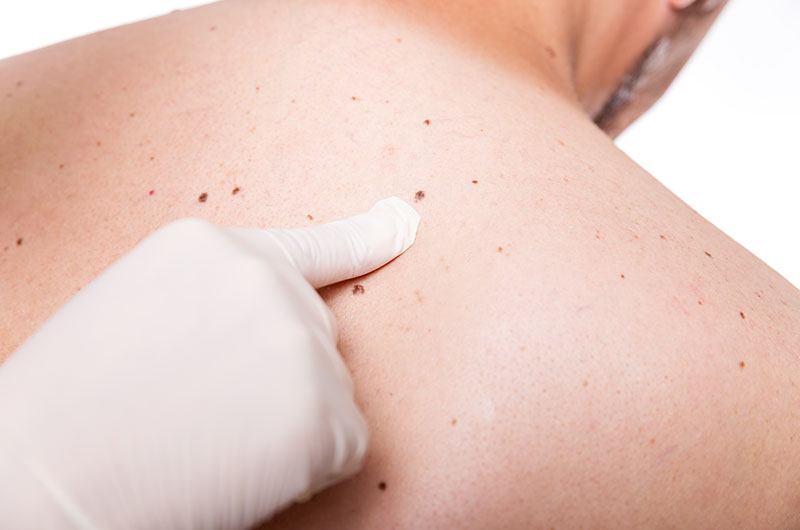Skin Cancers
Further the damage is usually done before we are 20 years old; thereafter sun exposure accelerates the process. Some estimates are that 75% of fair skinned Australians will develop a skin cancer of some type, an alarming statistic. Most common are non-pigmented skin cancers.
• Basal Cell Carcinomas
• BSquamous Cell Carcinomas
• Inter Epithelial Carcinomas
These tumours grow continuously and persistently, and if left can have disfiguring consequences and may be fatal.
Treatment
Large thick skin cancers usually require surgical removal which we do in our own on site operating theatre.
For smaller and more superficial skin cancers as well as solar damaged skin, we recommend the cutting edge technology of PDT (PhotoDynamic Therapy) which provides safe no injection no scalpel treatment second to surgery inefficacy.

Melanoma
Less common but with an annual incidence of 1 in 2000 is Malignant Melanoma. This is the deadliest of skin cancers, and may spread rapidly through the body. It requires early detection, any mole that changes colour, shape, size, itches or bleeds or any spot which suddenly arises should be immediately assessed.
Mole Removal
Moles are pigmented spots which arise over people’s bodies, often as we grow older and many times in displeasing locations such as nose chin or eyebrows. Otherwise, shaggy soft moles may occur elsewhere on the body.
It is also possible to remove these with our Erbium laser which allows along with electrosurgery, precise and definitive treatment.

